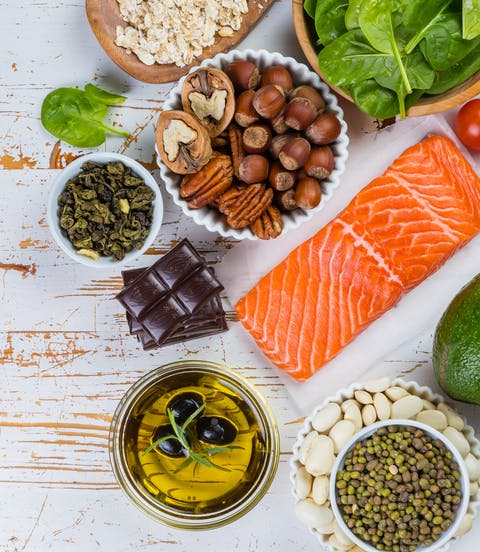
When it comes to choosing protein sources, you should consider the amino acids that each of your food items contains. Different proteins contain different amounts of each type of amino acid. Foods may be rich in some but not others. Meat, fish, and poultry are excellent sources of protein because they are low in calories and fat. Vegetables and grains, on the other hand, contain less lysine and tryptophan and methionine. Combining meats and vegetables with grains can offset the lack of one particular amino acid. Most health organizations recommend eating meat or dairy as a source protein.
High-protein foods also include peanut butters, cashew butters, and almonds. Lamb is a good source for essential nutrients like iron, zinc as well vitamin B12 and Phosphorus. Lamb has a high protein content and moderate amounts of fat. Lamb also contains CLA, which is a form of fatty acid that can help with weight management and satiety.
Protein in animal products comes in many forms, including eggs, yogurt, and milk. According to a study published in The Journal of Nutrition and Diet, men who eat high levels of protein have a 33% greater chance of developing heart disease. A high-protein diet can also increase the risk of heart disease in men. Research has also shown that a high-protein diet is linked to an increased chance of developing certain types of cancers, such as colon and colorectal. It has also been proven to adversely affect bone, liver, as well as kidney health.
Legumes, which are 27.9% rich in the amino acid Leucine, make a great source. Commercially-available pea-protein isolat and pea flour compliment cereal-based proteins. Moreover, legumes are important for vegetarian diets. Although they are not rich in methionine or cysteine, they do provide sufficient amounts of tryptophan, which is essential for the proper functioning of the body.
Protein-rich beans and seeds also make a great choice. A quarter cup of most seeds and nuts can provide approximately 4 to 9g protein. A couple of tablespoons of tahini or seeds can also provide 8 to 9 grams of protein. People need about 1.2g protein per kilo body weight on average. They are an excellent source for protein-deficient people.

You can also find protein in meats and dairy products. Animal protein is the best source of proteins, unlike vegetables. It contains all the essential amino acids. These foods are also excellent sources of micronutrients like selenium. potassium, and the B-complex vitamins. These foods have a high level of protein, but may also contain some fat. Choose low-fat varieties of dairy products or reduce the amount you eat if you are trying to reduce your fat intake.
You don't have to eat meat to get plant-based protein. Many grains have high levels of protein. In fact, they are more abundant than you might think. Lentils can be used as a complement to meat-based dishes. Lentils can be added to soups or salads for the same benefits. Lentils can also be used in smoothies and shakes. This is a great way to increase protein in your meals, without having to alter your diet. It will help you get all the nutrients you need.
People with diabetes need protein. It's an energy-boosting drug that also has many other health benefits. It gives you a feeling of fullness and stops you feeling hungry. The more protein you consume, the better. Protein is not only important for controlling your blood sugar, but it's also essential for your overall health. It helps balance your mood and energy levels. Aim to consume two portions of chicken or fish per week.

Unlike carbohydrates, protein can have many health benefits. It boosts energy and helps with weight loss. But, too much protein can lead to negative side effects. It can also reduce your immune systems. It can also lower your risk of suffering a heart attack. You need to take steps to ensure your body gets enough protein each day. Foods high in protein are important. If you're not sure whether or not to eat a specific food with high levels of these nutrients, you should check with your doctor before starting a new diet.
FAQ
What's the difference between a professional chef and an amateur cook?
A chef prepares food for other people. A cook prepares food for himself or herself. Both jobs require the preparation of food. However, chefs work directly with their customers. This may mean that they might have to choose what to cook for guests depending on their preferences. Cooks don't interact with customers. Instead, the cook ensures that the food tastes great before serving it to customers.
How long does learning to cook take? How long will it take me to learn how?
It depends on your level of skill. Some people can learn basic cooking techniques in as little as a week. Others may take several months or longer to feel competent enough to teach themselves how they cook.
The person who is learning to cook can vary in the amount of time they need. Someone who has never been to the kitchen before might need more time than someone who does it regularly. Some types of cooking are more difficult than others. Baking is more difficult than frying.
You should learn a particular technique to improve your cooking speed. After mastering one technique, you can move on to the next. Do not worry about how long it takes you to learn how to cook. Just keep practicing and enjoy the process.
Are there any requirements to become a chef?
No. Many chefs learned their craft on their own. Some even went to culinary school just to gain experience. Culinary school is preferred by most chefs because they have more opportunities to grow and learn. Culinary schools offer hands-on training which allows students to improve their skills and knowledge of cooking.
How much does a culinary school cost?
Culinary school costs vary depending on where you go, how long you study, and what program you choose. Average tuition costs between $10,000 and $30,000. Students graduate with approximately $20,000 of debt. Some programs offer scholarships, grants, or work-study opportunities.
How do you learn to cook the best?
Cooking can be something everyone should master. It's a great way to experience delicious food without having to learn how to cook. The first thing you need to do when learning to cook is to find a recipe that you like and follow it closely. Next, practice making small changes until you are comfortable cooking the dish. The last step is to cook for others. This will allow you to improve your cooking skills and test your abilities.
What should a novice cook do first?
Start cooking something simple, such as pasta, rice, soup. If you want to learn how to cook, go for a recipe book or YouTube video. It's much more fun to cook with someone you know. You can cook together as a family or with friends.
Can I learn to cook with my kids?
Yes! Yes! Kids love helping in the kitchen. It's a great way to teach responsibility and teamwork. The whole process can be done by children, including washing and chopping vegetables. Children will love helping to cook if they are taught safe knife handling techniques.
Statistics
- On average, chefs earn $58,740 a year, according to the BLS. - learnhowtobecome.org
- You'll be amazed that over 90% of CIA students receive scholarships and grants to finish their culinary studies. (ischoolconnect.com)
- The median pay for a chef or head cook is $53,380 per year or $25.66/hour, according to the U.S. Bureau of Labor Statistics (BLS). (learnhowtobecome.org)
External Links
How To
How to make a perfect eggroll
Omelets are my favorite breakfast dish. But how do they turn out so perfectly? Many different recipes and methods have failed to work for me. So today, I want to share some tips and tricks with you so you can make your own delicious and fluffy omelets every morning.
Before we start making omelets, let's remember that eggs are temperamental. The eggs must be fresh from an organic source and kept at room temperature until they are ready to be cooked. You must keep them cool enough to allow the whites to form properly and the yolks to become too runny if they're not kept at the right temperature. This makes your omelets look weirdly colored. It is best to use room-temperature eggs if you are going to cook them right away.
You might also try separating the egg before adding to the pan. You don't want any white to get mixed up with the yolk because this could cause the omelet to curdle.
The bottom part of an egg that is added directly to the stovetop might be burned, which could cause a ruined texture in your omelet. Instead, heat the egg in a microwave for 10 seconds and then place it in a pan. The microwave heat cooks the eggs just right without overcooking them.
Next, let us talk about how to mix the eggs. Mixing eggs together is important. You need to beat them well. Turn the bowl upside down and grab the whisk to do this. Then shake the bowl vigorously. This will whip the air around the bowl and mix the egg well.
Now comes the fun part: adding the milk to your mixture. The first step is to pour half of the milk in the beaten eggs. Next, fold the eggs into the remaining milk. You don't need to worry if streaks remain. They will disappear once you flip your omelet.
After folding the eggs fold the pan onto medium heat. When the oil starts to hot, wait for the pan to cook. Once the oil has gotten hot, add 1/4 cup of butter and swirl it around so that the entire pan is coated. Next, carefully open the lid and sprinkle salt into your pan. A pinch of salt will help prevent the omelet from sticking to the pan.
Cover the pan once the omelet is formed and allow it to cool completely. Flip the omelet upside down or with a spatula. Cook the other half for another minute. Serve immediately after removing the omelet from its pan.
This recipe is best when used with whole milk. But, you can use skimmed milk as well.